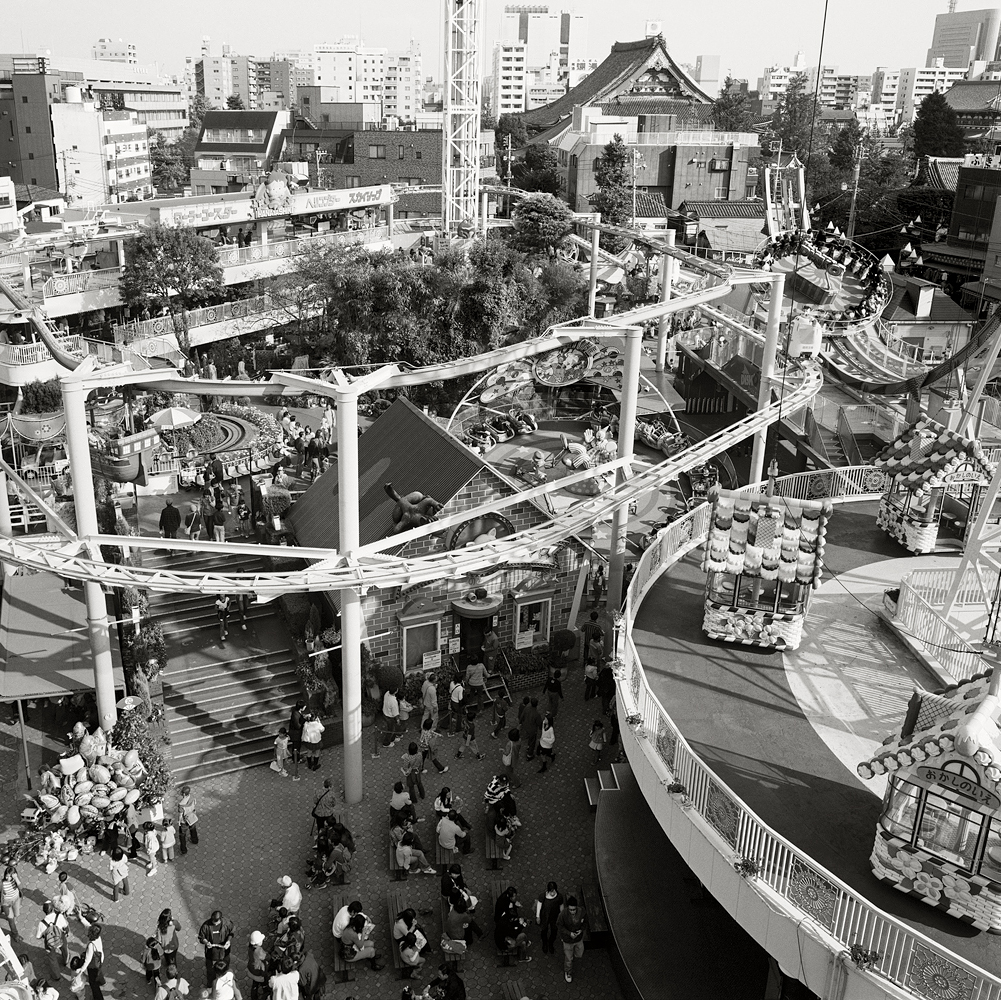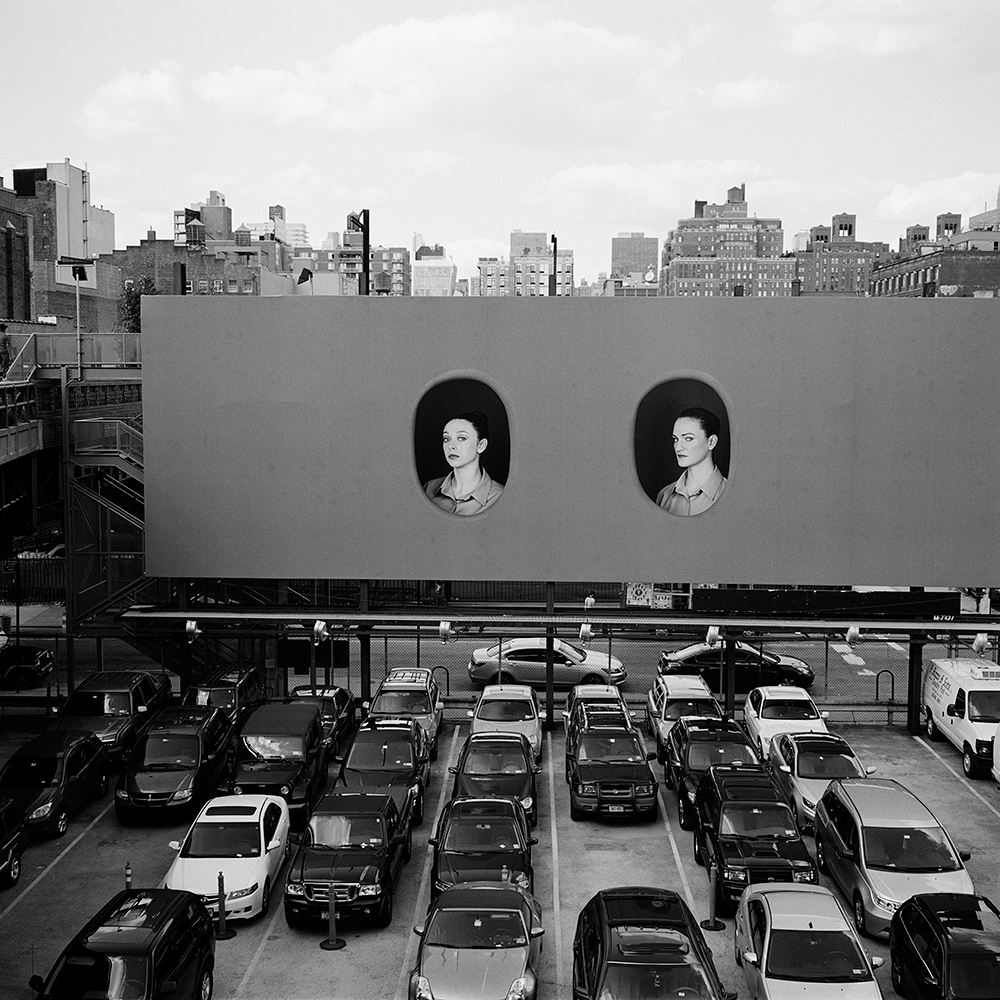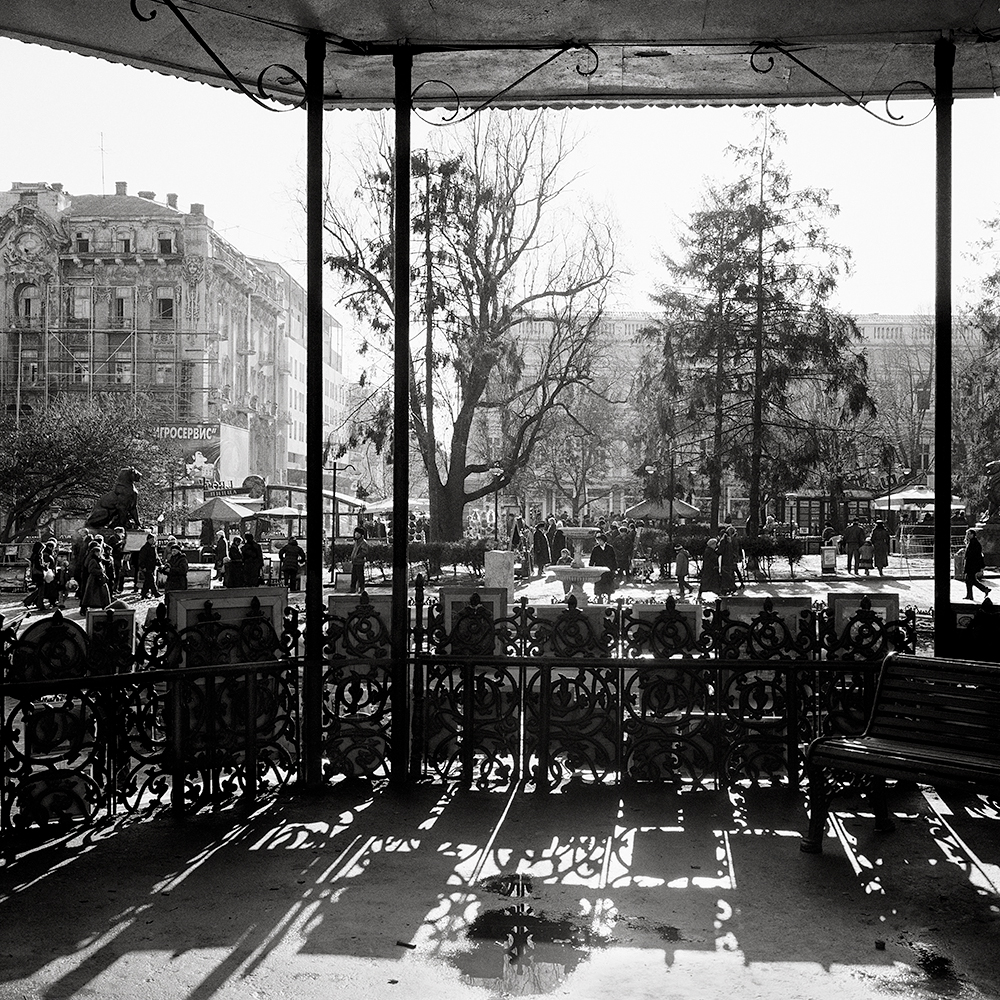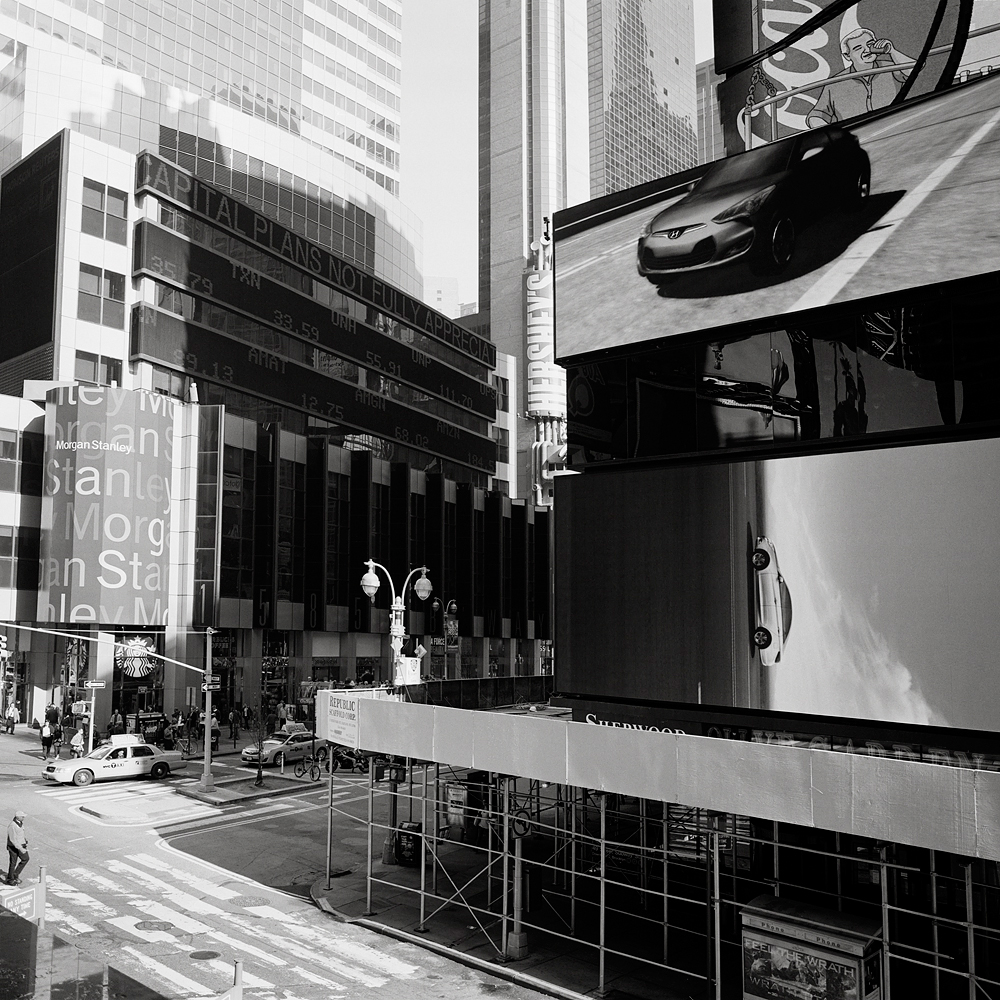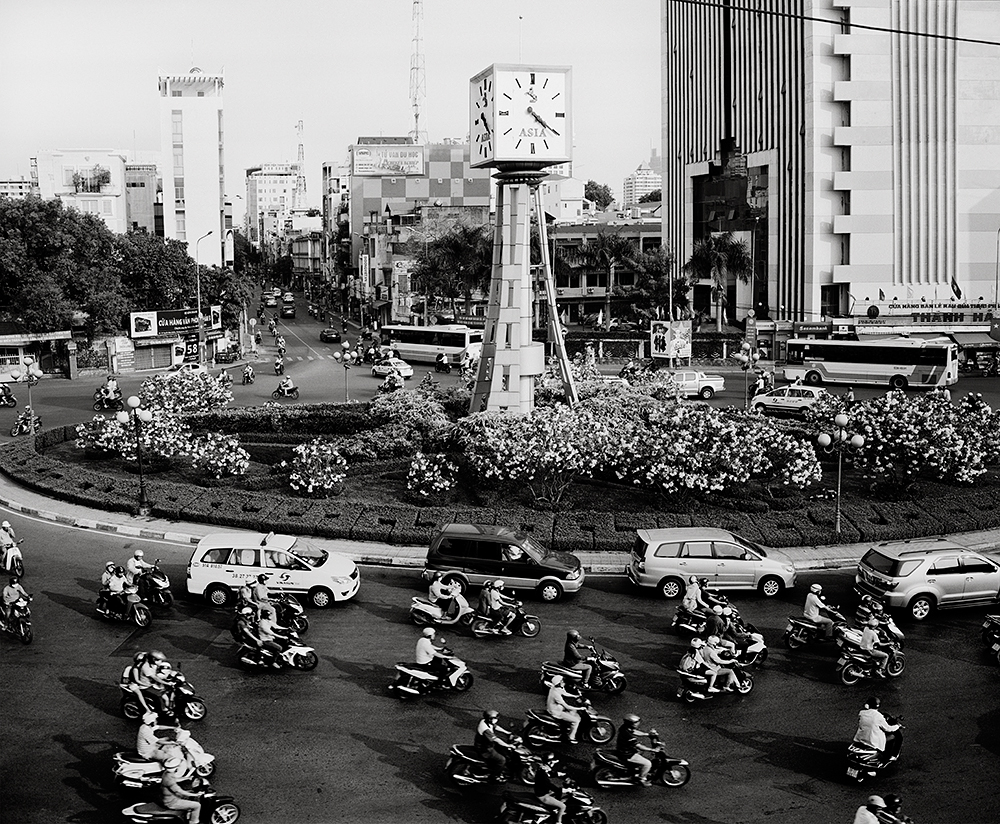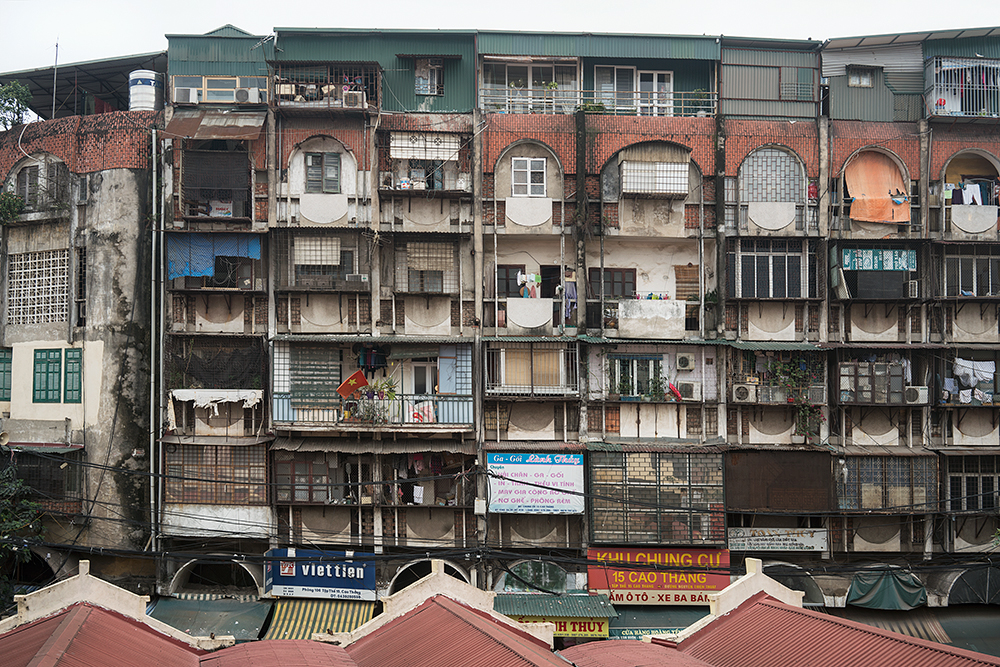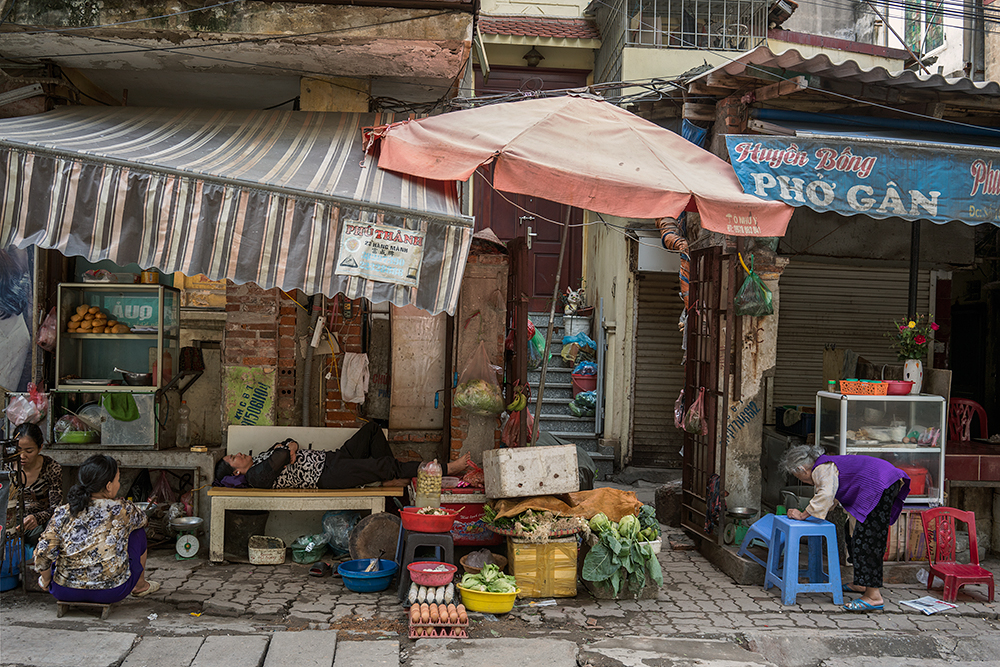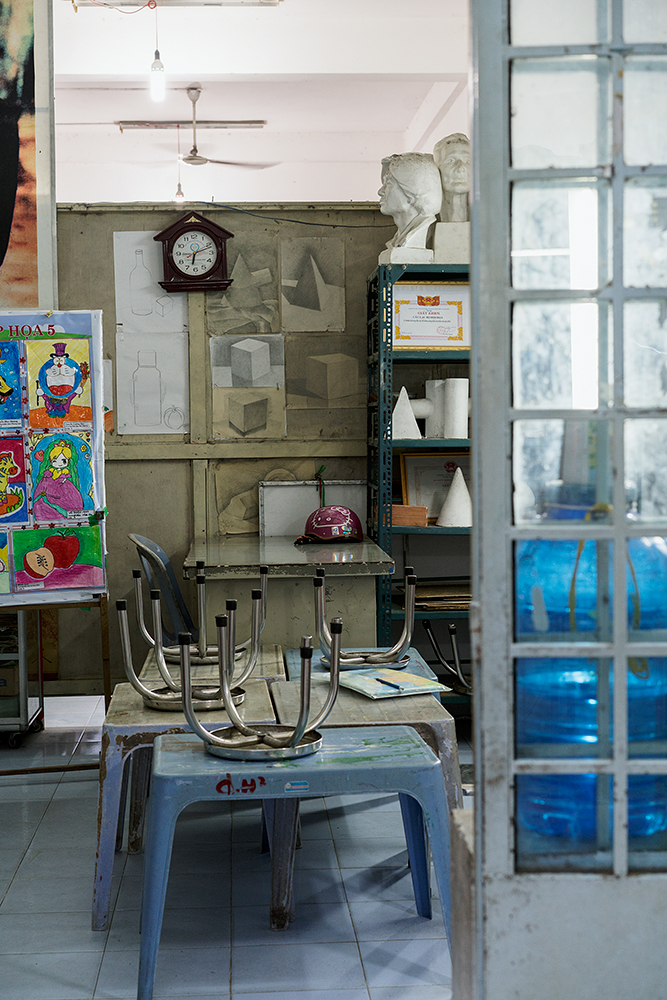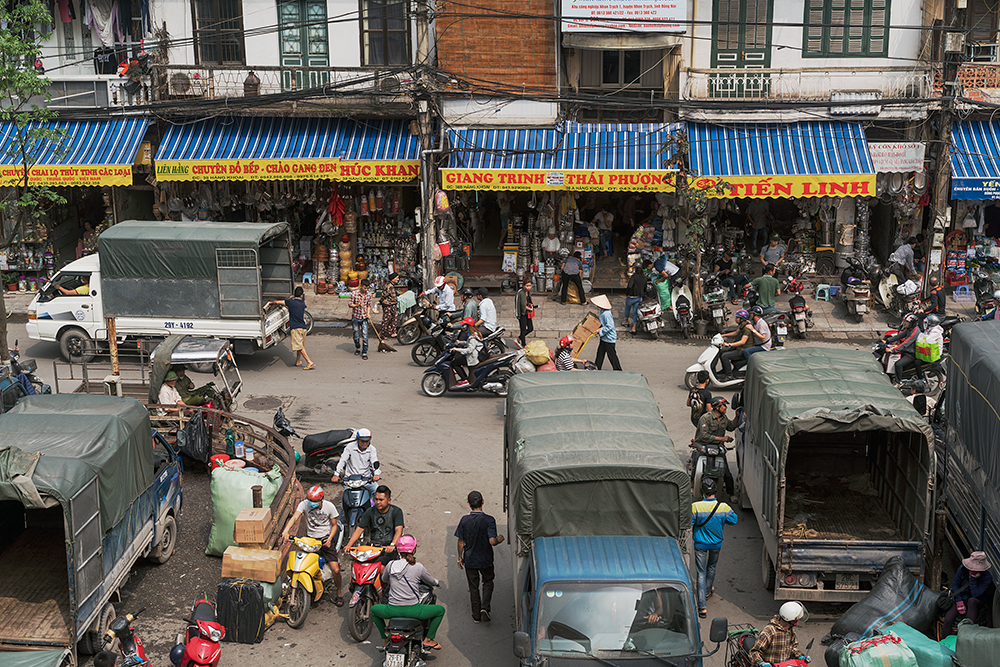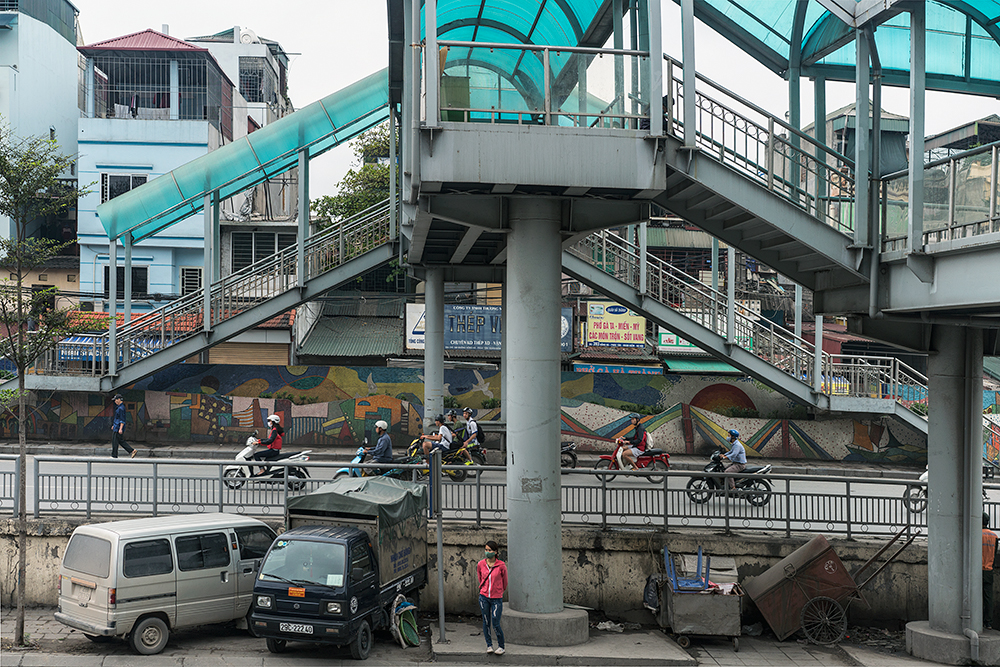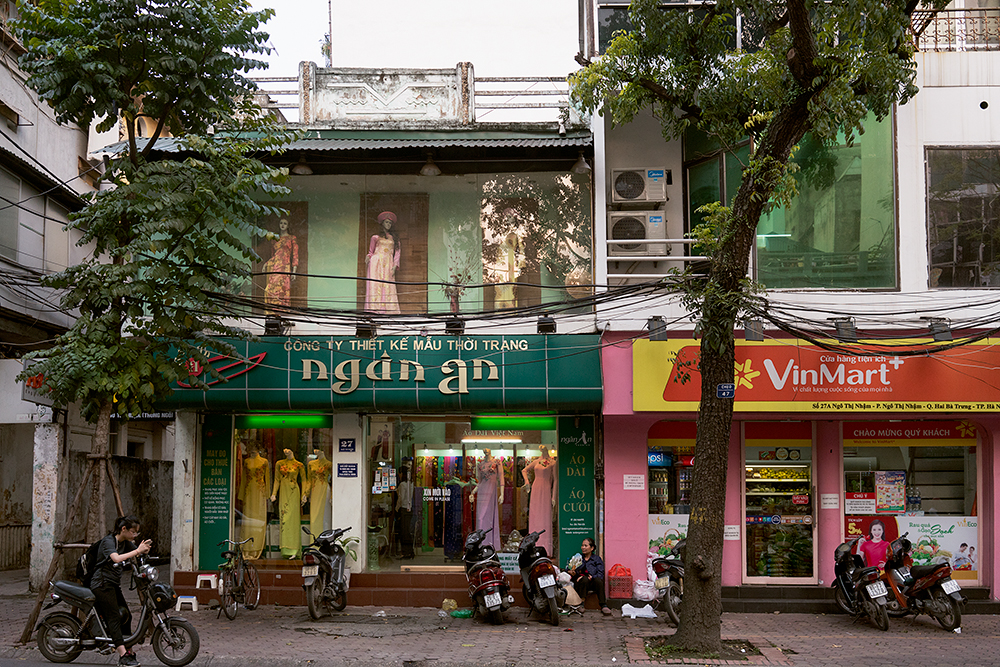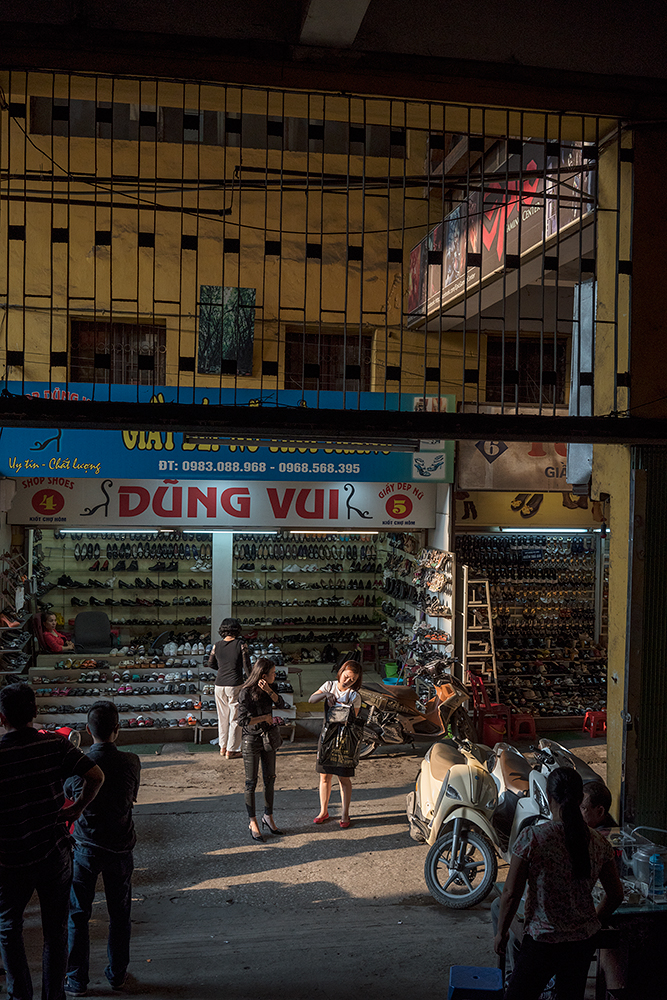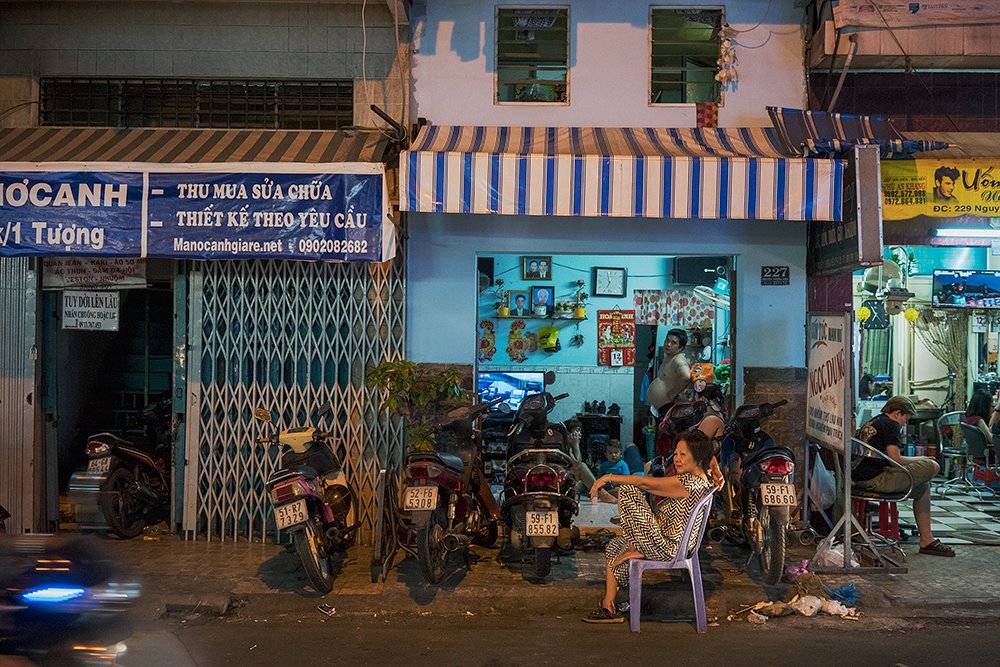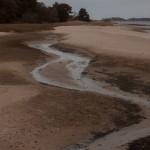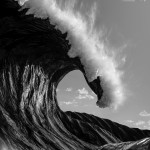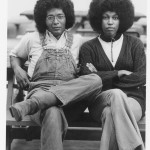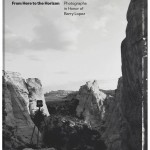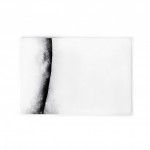Garie Waltzer: The States Project: Ohio
Garie Waltzer’s personal evolution as a photographer in some ways mirrors the wildly radical transformation of the medium itself during the past 50 years. After working as a painter as an undergraduate student, she embraced analog photography; later, she described her relationship to the medium as being “infused with a love of process and materials” and her work as straddling “the boundaries of what was considered ‘photographic.’” Waltzer was an early adopter of digital imaging, working with scanners and Apple computers in the 1980s; she combined digital output from imaging machines intended for business applications with drawing and other expressive techniques to create large-scale color electrostatic collages. Her hybrid use of imaging technologies and painterly strategies continued throughout the 1990s and into the early 2000s. But, just when, as she describes it, “the avalanche of digital work” revolutionized photography, Waltzer took a hiatus – and when she returned to photography, she came back to the analog world.
Waltzer decided largely to leave behind the studio and the array of cutting-edge technological hardware and software available to her there and instead to explore the urban landscape using a lens-based analog camera, an approach she had abandoned nearly two decades earlier. Beginning in 2005, Waltzer resumed work with an analog camera and black and white film, roaming the streets of cities such as Paris, Odessa, Tokyo, Miami and New York with a medium-format camera for her series “Living City.” Her exquisitely crafted, luminous and richly detailed photographs – made using a hybrid analog-digital process and printed on an inkjet printer outfitted with monochrome carbon pigmented inks – are characterized by sweeping vistas, high vantage points that often flatten the urban spaces and dense, architectonic complexity that looms over cities. The photographs in “Living City” are conceptually taut and rigorous; their sly formal coherence and multiple centers of interest are not immediately evident. The photographs challenge viewers to examine them almost as anthropologists – and viewers are rewarded by discovering legions of urbanites navigating their cities in inscrutable and mysterious ways.
Though the pictures appear as if they were made with a tripod, I was surprised to learn Waltzer always uses the camera as a hand-held instrument. She is a precisionist photographer in the tradition of Charles Sheeler and acknowledges the importance of the “New Topographics” movement in her work. Cultural anthropologist, sociologist, lover of architecture, street photographer and accidental portraitist, Waltzer encourages objective, thorough examination of some of the world’s most vibrant cities while simultaneously displaying human emotions of exuberance, alienation and loneliness.
More recently, in “Armature for Stories,” Waltzer traveled to Vietnam and, as she has written, “found its urban spaces so rich with the energy of daily life that I have returned repeatedly to try to better understand its charisma.” Unlike in “Living City,” Waltzer has returned to working all digitally and in color for this new project. With radical shifts in form, she has moved into the street, eschewing extreme high vantage points and sweeping vistas to engage more directly with the intersection of architecture, human interaction and gesture. While Waltzer’s implicit narration in “Living City” is cooler and more detached, her interaction with Vietnam is intimate and warm with human contact and the emotional use of color.
Garie Waltzer was born in New York City and received her BFA in painting and MFA in photography from State University of New York/ Buffalo. Her photographic work has been honored with grants from the National Endowment for the Arts, Vermont Studio Center, LightWork, and the Ohio Arts Council. She is a recipient of a 2011 Ohio Arts Council Award in Excellence in Photography and the 2012 Cleveland Arts Prize. Waltzer developed the photography program at Cleveland’s Cuyahoga Community College where she chaired the department and taught for many years.
Garie Waltzer’s work explores the convergence of time, place and populace. Exhibited widely, her work can be found in the permanent collections of the Cleveland Museum of Art, the Robert B. Menschel Media Center/ LightWork, The Museum of Fine Art, Houston, The Cleveland Clinic Foundation, The Cleveland Foundation, The George Gund Foundation, McKinsey Corporation, Progressive Insurance, Xerox Corporation and many other corporate and private collections.
Projects include a commissioned photo essay for the George Gund Foundation; fellowship residencies at Light Work in Syracuse, NY and Vermont Studio Center; inclusion in Light Work’s Fine Print program and publication in Contact Sheet; commissions from The Cultural Landscape Foundation and American Photo magazine for the traveling exhibition Landslide 2010, and a commissioned book piece of a designed landscape for private clients. Recent exhibitions include Living City in both Singapore and Hong Kong. She is currently working on projects that examine the contemporary cultural landscape, including a book piece on Vietnam’s urban spaces.
Home base is Cleveland, Ohio.
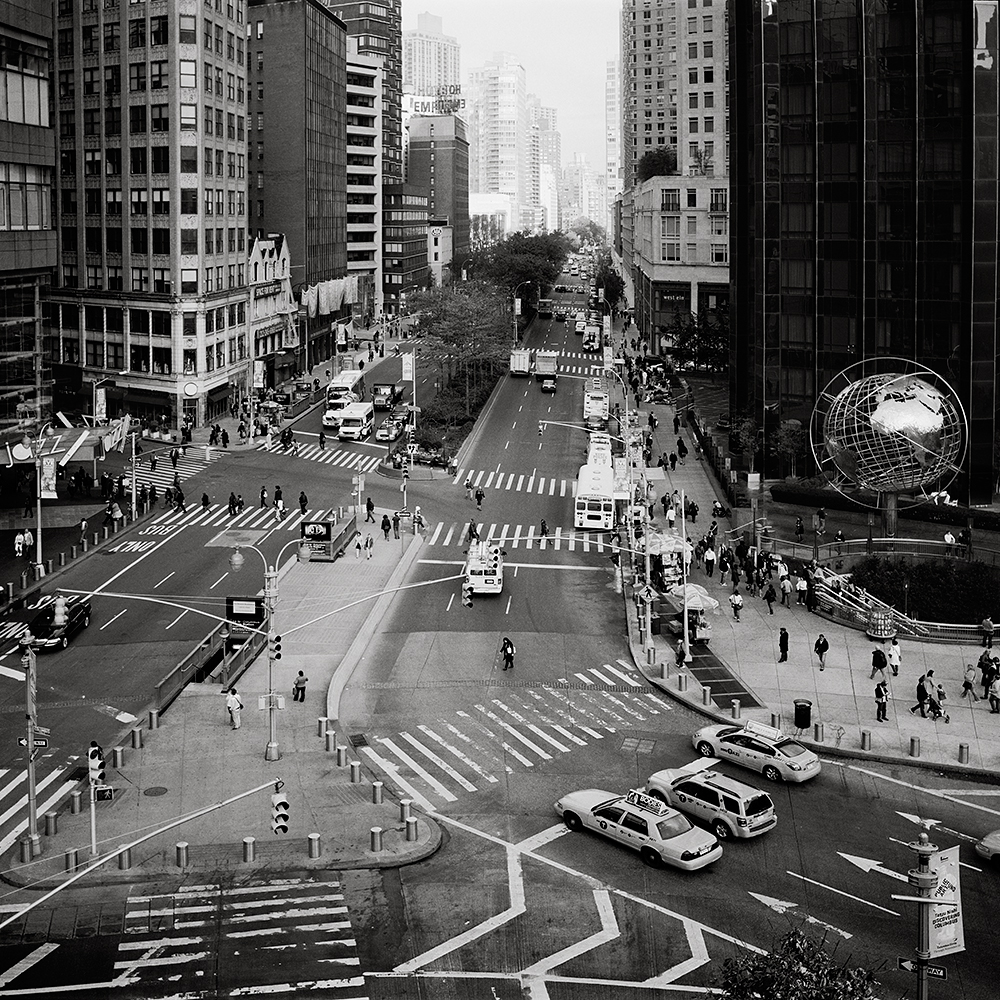
©Garie Waltzer, Looking down Broadway from Columbus Circle, including Trump International Hotel and Tower in 2012
Living City
For the past decade or more I’ve been photographing the contemporary cultural landscape of urban spaces – places made and lived in over time. The images of Living City examine the nature of urbanism in details of commerce, recreation, and social history, in a range of different cities. With elevated vantage points and deep vistas, the images reveal spatial and temporal connections in urban space not visible at pedestrian level. Simultaneously filled with intimate details of street life while sharing a view of the gestalt, they examine the structures, collective narrative, and temporal multiplicity of urban space. Elements of architecture, infrastructure, signage, and occupation are rendered with a specificity of detail that is abundant, and particular to its culture and time. I’m fascinated with the repetitious jumble of common elements of the urban construct – rooftops, towers, walls, bridges, water towers, signage, roads and crossings, – and how they reposition and reform themselves in locations far and near. I like to pack the frame with dense iconography and intentionally level the hierarchy of information, allowing for a long meander through the details of a place. I embrace the serendipity of the walking/looking process, as I search for the right place to stand amidst ever-changing spatial incongruities and odd temporal alignments, hoping to record that ineffable sense of place. – Garie Waltzer
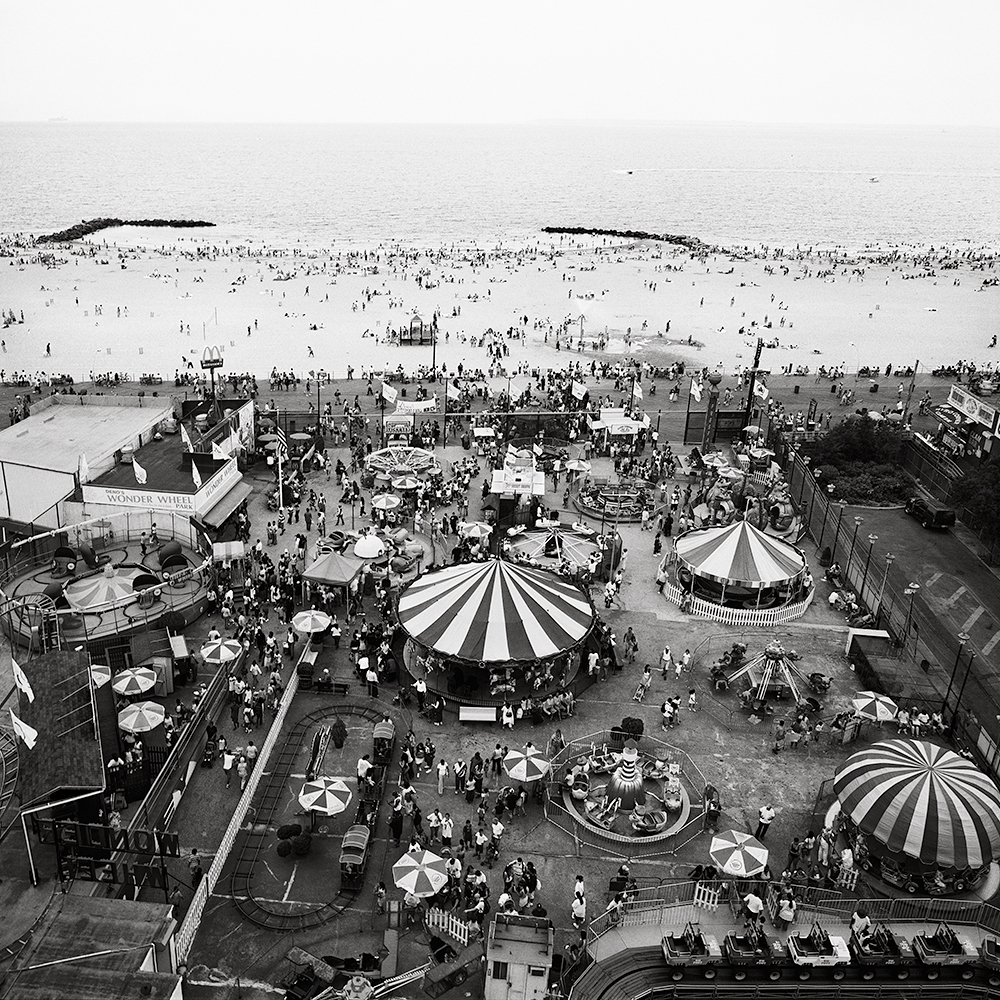
©Garie Waltzer, a view from the ferris wheel of Brooklyn New York’s iconic Coney Island Amusement Park and beach
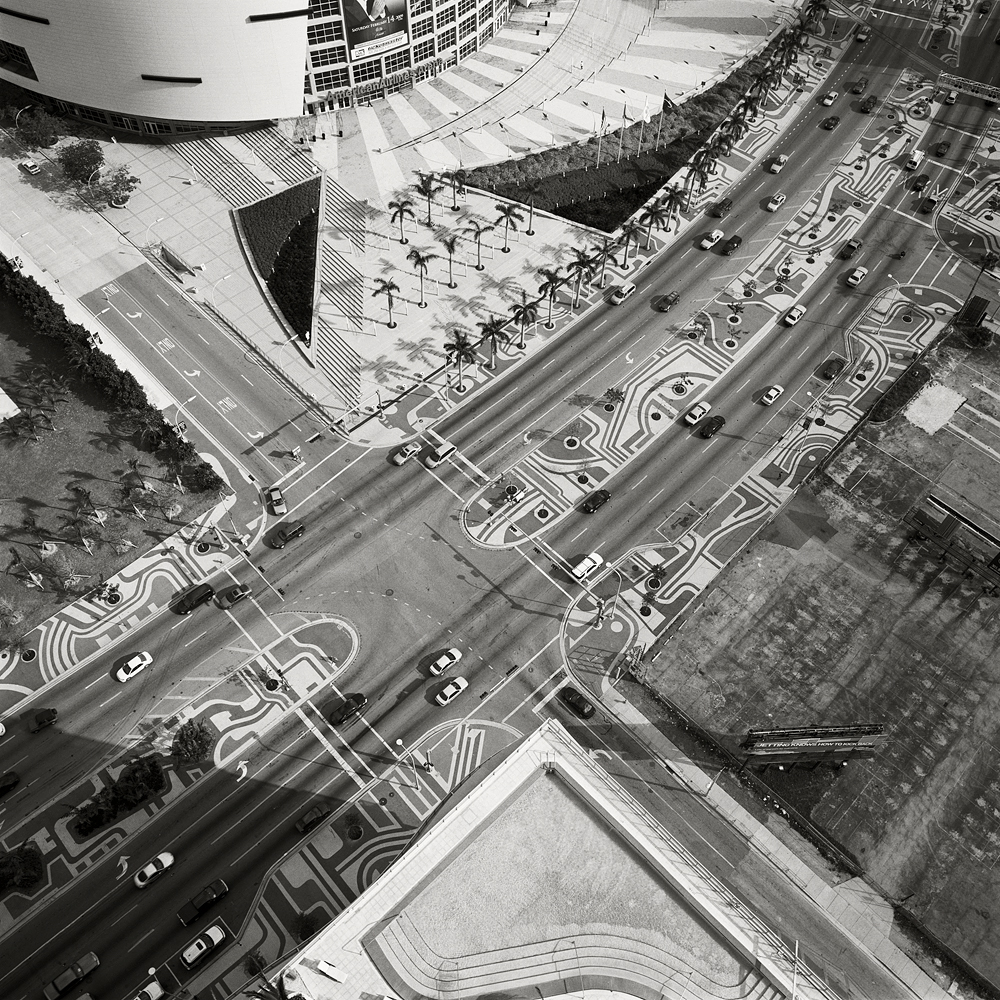
©Garie Waltzer, Biscayne Boulevard landscape architecture designed by Roberto Burle Marx, Miami, Florida, USA
Armature for Stories
Armature for Stories is a new project that has me photographing in one of the most deliriously vibrant landscapes I’ve yet encountered. I’ve found Vietnam’s urban spaces so rich with the energy of daily life that I have returned repeatedly to try to better understand its charisma. As with Living City, I am rendering formalist views of architecture, infrastructure, and artifacts that provide a stage for intimate narratives of place and time. Working in color, and stepping in more closely to the action, I am seeking a more intimate encounter with the notions of social space, movement, time, and history that are revealed in the daily cityscape of Vietnam. I am currently working on a book project for these urban images of Vietnam. – Garie Waltzer
Posts on Lenscratch may not be reproduced without the permission of the Lenscratch staff and the photographer.
Recommended
-
One Year Later: Christian K. LeeJuly 20th, 2024
-
One Year Later: Nykelle DeVivoJuly 19th, 2024
-
THE CENTER AWARDS: FISCAL SPONSORSHIP: CAROLINE GUTMANMay 28th, 2024
-
Earth Week: Hugh Kretschmer: Plastic “Waves”April 24th, 2024
-
Earth Week: Richard Lloyd Lewis: Abiogenesis, My Home, Our HomeApril 23rd, 2024

